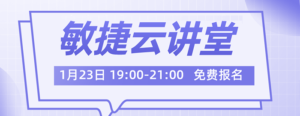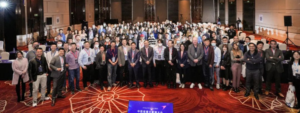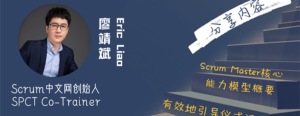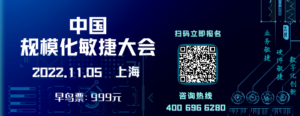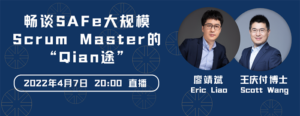As the wave of digitalization impacts almost all industries, more and more enterprises and individuals are beginning to contact, learn, and practice agile. After 20 years of development, more and more companies have made gratifying achievements in agile development: using various agile methods to deliver software products and form continuous delivery capabilities.
But more and more agile practitioners are starting to think: Why are most of the agile practitioners IT people? What’s the difference between “agile”, “agile development”, or even “agile development”? Are business teams really leveraging the continuous delivery capabilities of agile teams to create higher value? What does “digital transformation” mean?
I don’t know if you have noticed an interesting phenomenon. In the first 20 years, Agile’s trajectory of influence in traditional industries is very characteristic: first, it affects the communication industry, and then it is used on a large scale in the field of application software development, and then turns to the financial industry. The automotive industry has made a sudden effort, and in the past two years, it has extended to retail, fast-moving consumer goods, medicine, industrial automation, aerospace… and more and more forward-looking companies have begun to use agile in non-software fields. What is the driving force behind this trajectory? Is agile just agile development? In addition to the continuous delivery capability of software, does agility have a greater positive impact on business development and organizational development?
Through this sharing, I hope to help you get the answer through some cases: First of all, agile ≠ agile development, and the continuous delivery capability of software only plays a small part of the value of agile. For business managers, in the third decade of agile, “business agility” and “organization agility” will become important differentiating competitiveness. For agile practitioners, “business agility” and “organization agility” will also be new battlefields where challenges and opportunities coexist.
Activity form: Remote live broadcast sharing + interactive communication of Tencent Conference, it is recommended to download the client in advance
Activity time: 19:30-20:30, May 7, 2022
Number of people: limited to 300 people
Activity fee: free
Sign up
successfully concluded.
Share guests

- Scrum Chinese website senior consultant and trainer
- International Scrum Alliance Certified Scrum Trainer (CST)
- Enterprise Agile Coach
- PMP senior agile development project expert
- Available in Chinese and English
- CSM, CSPO, CSD, CSP, PMP
Directly participated in or led the agile transformation of several Fortune 500 companies (Electronic Arts, Cisco, State Street, Fampkinco, etc.), and provided services for more well-known enterprises (JPMorgan, IBM, HP, Philips, EMC, Motorola, Nokia, Intel, Accenture, CapGemini, RingCentral, China Mobile, HSBC, AXA, Bank of China, China Trust, Daimler, BMW, Huawei, Lenovo, Sina, etc.). His services cover 14 countries and regions: Ireland, UK, Czech Republic, Saudi Arabia, Egypt, India, Singapore, Malaysia, Sri Lanka, Mainland China, Hong Kong, Taiwan, Australia and the United States.
ScrumAlliance certified trainer (CST, 268 people worldwide), is also an early project management practitioner and PMP in China, and has certified more than 10,000 CSM, CSPO and A-CSM globally.
With more than 20 years of experience in the IT industry, he is also one of the earliest agile practitioners in Asia. He focuses on disseminating and promoting new agile concepts and practices such as Scrum, Kanban, and LeSS; cultivating efficient agile teams and excellent agile practitioners; philosophy and culture.
